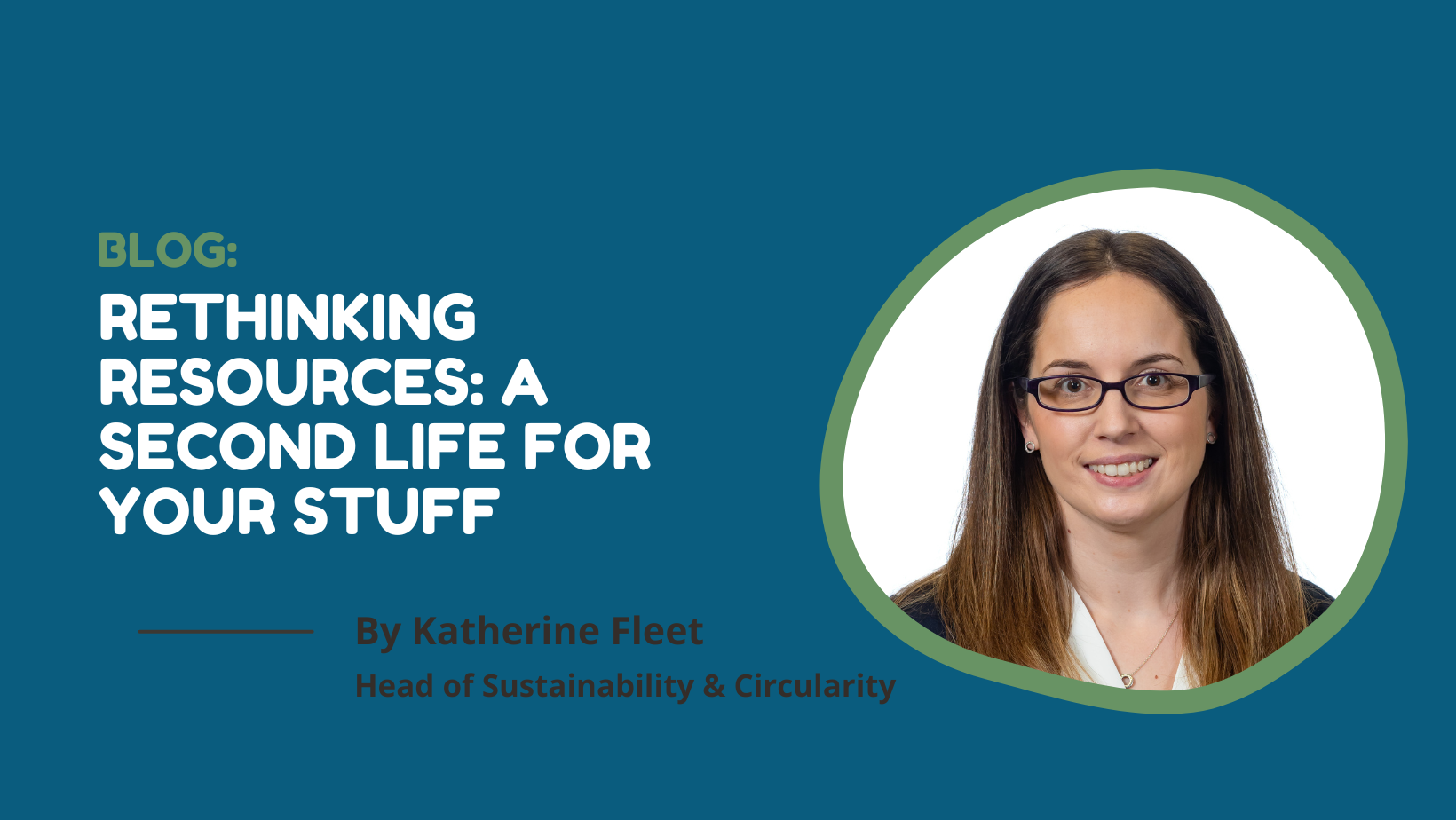Rethinking Resources: A Second Life for Your Stuff

I recently moved house, and alongside all the excitement (and challenges) that come with it, I became more aware of my consumption habits and potential waste. It’s not until you move all of your worldly belongings that you realise what you have and what you no longer need or want!
One of my first focus areas once moving was confirmed was to start going through each room identifying anything that I didn’t need or want anymore. I’m not a hoarder but having lived in the same place for a number of years it’s very easy to accumulate stuff, some of which I hadn’t used or seen for years! This process then left me with piles of belongings that I needed to do something with, anything from bean bags to shoes to cat toys!
Having spent a lot of time at work immersed in the world of reusable packaging, my personal circumstances started to highlight a whole new area of reuse to me as I didn’t want to send these perfectly good items to landfill. I didn’t want to simply take everything to the ‘tip’ and hope for the best. Instead, I explored different reuse options. Some items went to charity shops, while others were sold on online platforms like Vinted or Facebook Marketplace. Anything truly unusable went to the household waste recycling centre. I realise though that not everyone has the time, motivation, capacity or are able to access these services so many items do not make it onto further reuse options and end up going to landfill or incineration when they are perfectly usable and could have had a second-life. Suez estimate that 35,500 items suitable for reuse pass through Household Waste Recycling centres every day, equivalent to 13 million items a year[1]. These are mostly recycled, incinerated or landfilled and do not go on to any kind of reuse.
Suez also found that home movers are a prime culprit for disposing of goods (electricals, furniture, toys, textiles, garden, diy etc), throwing away up to £150 million worth each year. I think this relates back to my previous comment of you don’t know what you really have until you start to move it all! Electrical items represent a large portion of the challenge, 160,000 tonnes are ending up as waste each year with 880 million unwanted electrical items still stored in people’s homes1.
The applicability of considering reuse isn’t just for when you are moving out but also when you move into your new home! Furniture is of course a big part of a house move and while I had originally thought new house, new furniture, everything I owned was actually all in pretty good condition, even after 10 or more years, despite it mostly being flat pack furniture that had endured at least two moves before (good old Ikea!). The choice about whether to keep the furniture really made me think about just how wasteful we can be when we move and decide to buy all new furniture or change the decoration in part of the house so the old sofa/cupboard/bed/table despite being perfectly good no longer matches the décor so unceremoniously gets turfed out.
While I made the decision to keep much of my old furniture, there were new bits and pieces that were needed. I took a conscious decision to source as much as possible from second-hand sources, whether this be online platforms or local charity shops. We have a great one near us that has an abundance of furniture, most of it in great condition, that needs a new home at a fraction of the cost you would pay for it new. And yes, while financial reasons were a factor (we all know that moving is a costly business!) the environmental impact was also there at the front of my mind, buying belongings for a house is a huge use of resources. Suez project that more than a fifth (21%) of household spending is on products that could have been sourced, quite easily, second-hand1.
One of my favourite places to peruse used furniture and household goods is my local Emmaus community. Emmaus is a homelessness charity that provides a home, training and work opportunities supporting those who have found themselves homeless. The communities generate income through social enterprises with the main business activity being the collection of donated household furniture and goods which are then sold in the community shops. As well as charity shops, the communities also run cafés, house clearance businesses, gardening projects and clothing shops with some communities also “upcycling” old furniture, re-painting and re-upholstering it to give it a new lease of life before it is sold on. This is all run by “companions,” those who live in and are supported by the Emmaus community. Not only does reuse have a positive environmental impact but it can have positive social impacts too!
When was the last time you cleared out your home – did you consider where those items ended up? Every year, millions of perfectly usable items are discarded simply because they don’t fit a new home’s aesthetic or because replacing them seems easier than reusing. But small changes in how we buy and dispose of household goods can make a huge difference. Next time you’re about to throw something out, ask yourself: Could someone else use this? And before buying something new, consider checking second-hand sources first—you might save money, reduce waste, and even support a good cause!
[1] Repair, reuse, reform: How to accelerate progress to a circular economy, SUEZ